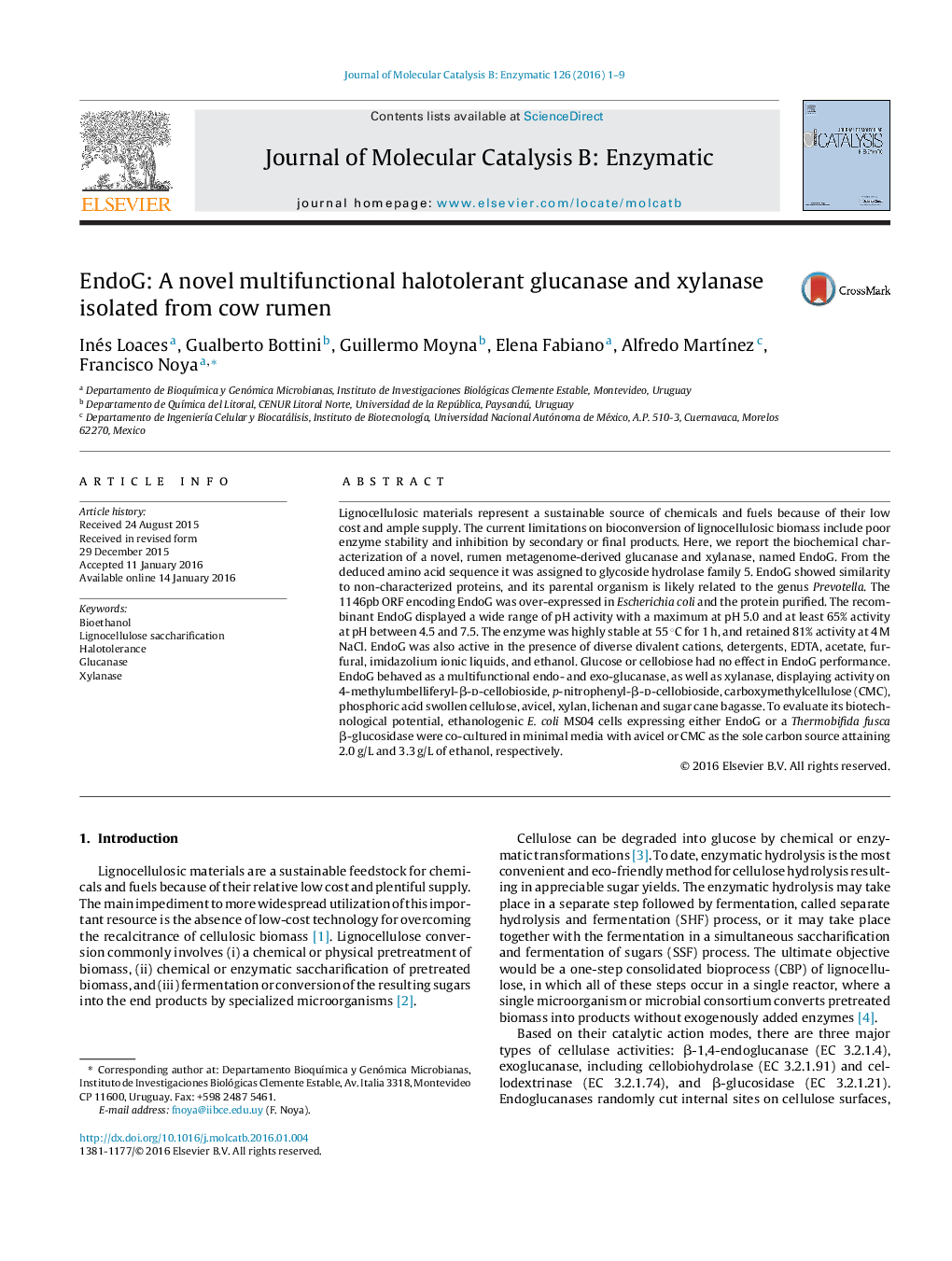| Article ID | Journal | Published Year | Pages | File Type |
|---|---|---|---|---|
| 69327 | Journal of Molecular Catalysis B: Enzymatic | 2016 | 9 Pages |
•We described EndoG, a novel multifunctional enzyme from cow rumen.•It is related to a yet non-sequenced microorganism related to Prevotella.•EndoG displayed exo and endo-glucanase activities, as well as xylanase activity.•It was active at low temperatures and tolerant to common industrial inhibitors.•It allowed ethanol production from minimal media containing avicel or CMC.
Lignocellulosic materials represent a sustainable source of chemicals and fuels because of their low cost and ample supply. The current limitations on bioconversion of lignocellulosic biomass include poor enzyme stability and inhibition by secondary or final products. Here, we report the biochemical characterization of a novel, rumen metagenome-derived glucanase and xylanase, named EndoG. From the deduced amino acid sequence it was assigned to glycoside hydrolase family 5. EndoG showed similarity to non-characterized proteins, and its parental organism is likely related to the genus Prevotella. The 1146pb ORF encoding EndoG was over-expressed in Escherichia coli and the protein purified. The recombinant EndoG displayed a wide range of pH activity with a maximum at pH 5.0 and at least 65% activity at pH between 4.5 and 7.5. The enzyme was highly stable at 55 °C for 1 h, and retained 81% activity at 4 M NaCl. EndoG was also active in the presence of diverse divalent cations, detergents, EDTA, acetate, furfural, imidazolium ionic liquids, and ethanol. Glucose or cellobiose had no effect in EndoG performance. EndoG behaved as a multifunctional endo- and exo-glucanase, as well as xylanase, displaying activity on 4-methylumbelliferyl-β-d-cellobioside, p-nitrophenyl-β-d-cellobioside, carboxymethylcellulose (CMC), phosphoric acid swollen cellulose, avicel, xylan, lichenan and sugar cane bagasse. To evaluate its biotechnological potential, ethanologenic E. coli MS04 cells expressing either EndoG or a Thermobifida fusca β-glucosidase were co-cultured in minimal media with avicel or CMC as the sole carbon source attaining 2.0 g/L and 3.3 g/L of ethanol, respectively.
Graphical abstractFigure optionsDownload full-size imageDownload as PowerPoint slide
